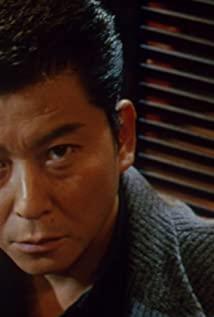In 1997, "The Eel" and Abbas' "The Taste of Cherry" won the Palme d'Or that year. From this point of view, the artistic level of "The Eel" is definitely not as low-key as many critics now say. After watching the film myself, I feel that there is still something to say about it.
Of this, the biggest feeling to me is that, fifteen years after the award for "Narayama Festival Kao", the work of Imamura Shohei, which won him the second prize, is still the same way as "Narayama Festival Kao" as a whole. Numbers: There is no stylized treatment in the audition, and it is not avant-garde and experimental. The dreams and spiritual shots of several eels in series only add a little surreal meaning; the narrative generally does not deviate from the main sequence of the timeline; the characters Focusing on the split-reorganization-split of the family; it is still the animal allegorical character psychology to break the emptiness of the empty mirror; the shooting technique has not been innovated, and the actor's performance and the picture presentation are coordinated with the strong scheduling ability; the climax is short and obvious enough. Such as warm water into the stomach, you can feel it without being cold or hot.
This kind of feeling is summed up like a traditional and regular film that is difficult to find outstanding features. You can say it is an old and old-fashioned way, not like Abbas was still exploring at that time, not like Godard’s now. A series of pioneering attempts. Imamura Shohei produced such a set of old-fashioned classic films in his rare years, which can fully indicate the complete decline of the Japanese classic or classical film period, or that he is still immersed in that era. After that, there was a vacancy that lasted for 21 years, until Hirokazu Koreeda won the grand prize.
Another interesting feeling is, what is the motive and intention of Imamura Changhei to deal with the erotic drama. There are three sources of lust in "Narayama Festival Examination", one is Chenping, but Chenping's son Kasakaji, and the third is Chenping's younger brother Risuke. "Narayama Festival Kao" is not an erotic film, but there are still many such scenes in the film, all of which are just deliberate cover and nudity, just like "Eel". You can see their clear movements, you can see what you want to see, but the only thing is that it is not erotic enough, not enough to provoke the audience's emotions, and not enough time to make the audience change their thinking direction. This feeling combined is like a erotic drama in a complete film, it exists for the purpose of reproduction and strictly chronological narration. Chen Ping's sex is for narrative, a piece of life that needs to be captured in the passage of time in the film. Erotic drama does not serve the theme to reveal sex, nor does it have any big and profound meaning, it is purely for narrative assembly. The remaining two, because the film does not have a chronological retrospective, have the same purpose as Chenping's drama, except that one comes from his own selfish desires and the other comes from arrangements, but they are both regular narratives.
In "The Eel", it is for reproduction. The first few minutes of the film explain all the background of the story. The time span is so large that it does not give the audience time to think. mean. Although there is no repetition in time, there is still this wonderful feeling. When it comes to the second Guizi's dream, it is not the surreal function of the protagonist Yamashita's dream. The friction of the child's problem has further foreshadowed the superb tail. In this way, the upper and lower structure of the film is extremely strict, and there are plans for when to insert, when to narrate, when to start preparing for the climax, and when to release or reveal clues. Telling a good story, in line with the narrative norms and image creation norms of classic movies, densely weave this classical and regular "Eel".
But the film is not without some heart. For example, the operation of the blood-splattering shot at the beginning is quite unconventional, which makes the camera exist as a recorder, beyond the traditional functions of calmness or camera voyeurism, and becomes a complete and detailed bystander. The story of the crime report is spread out, so that the crime and surrender are integrated in time, so that the audience is repeatedly separated from the inside and outside of the story scene, and the actors have also changed their identities in the play and actors. The relationship between the audience and the characters' respective identities is A very meaningful attempt!
The multiple demonstrations of dreams, the transcendental dialogue between humans and animals, and the externalization of spirit to human torture have all worn away the original feeling of being full of avant-garde, and have been thoroughly integrated into the narrative sequence and rhythm of this film. , This kind of running-in and compromise has also achieved the classicism of Imamura Shohei. The eel makes the film feel surreal, and it also cross-connects the film in time, making the film three-dimensional. Don't be too impressed with the long-shot processing and scheduling of the climax of the group play! The endings of Imamura's films are generally about life or the continuation of calm, whether it is joy or sorrow.
View more about The Eel reviews











